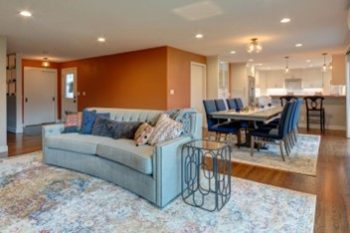The Psychology of Color
We had an especially warm last few days of winter in Seattle and the daffodils and flowering cherry and plum trees are starting to bloom. It’s about to be color time!
As designers, we are often focused on color and learning about what resonates with our clients. Color is a powerful tool in the world of home design, capable of evoking emotions, influencing moods, and transforming spaces. Understanding the psychology of color allows for the creation of environments that resonate with inhabitants on a deeper level.
Every color has its own psychological associations, which can vary based on cultural context and personal experiences. Here’s a brief overview of some common colors and their psychological effects:
Blue: Known for its calming and serene qualities, blue is often used in bedrooms and living rooms to promote relaxation and tranquility. Lighter shades can create an airy and spacious feel, while darker blues can add depth and sophistication.
Green: Symbolizing growth, harmony and nature, green is ideal for spaces where rejuvenation and balance are desired. It’s particularly well-suited for kitchens, bathrooms and home offices.
Yellow: As the color of sunshine, yellow is associated with happiness, optimism, and energy. Incorporating yellow accents or using it as a primary color can brighten up any room and create a cheerful atmosphere. However, too much yellow can be overwhelming, so it’s best used in moderation.
Red: Bold and passionate, red stimulates the senses and encourages action. It’s often used in dining rooms and areas where socialization and activity are encouraged. Excessive use of red can also lead to feelings of agitation so it’s important to balance it with more calming hues.
Neutral Colors: Colors like white, beige and gray are versatile and timeless, providing a neutral backdrop that can complement any style or aesthetic. Neutral colors create a sense of balance and simplicity, allowing other elements in the room to stand out.
When designing a home, it’s essential to consider the psychological impact of color and how it contributes to the overall ambiance of each space. By choosing colors that resonate with the desired mood and atmosphere, homeowners can create environments that promote well-being, productivity, and comfort.
Ultimately, the key to successful home design lies in finding the perfect balance of colors that not only reflect personal preferences but also enhance the functionality and livability of the space Whether it’s a cozy bedroom retreat or an inviting living area, harnessing the psychology of color can truly transform a house into a home.

A fresh blue in this West Seattle bathroom creates an airiness that showcases the natural light. Designed by Housewarming

This burnt orange accent wall paired with blue-toned furnishings provides a warmth and depth to this Burien living/dining area. Designed by Housewarming

Pale blue walls and white built-ins and millwork allow this beautiful tiled fireplace to be the show stopper in this North Seattle living room. Designed by Housewarming
